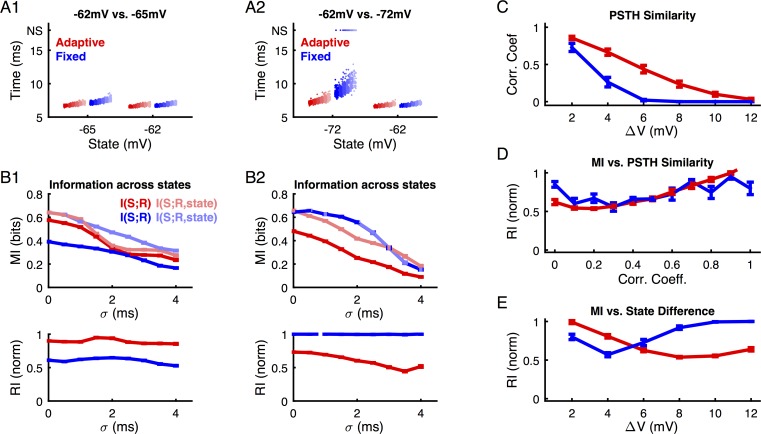Fig 5. Information decoding across different membrane states and spike threshold types for a ‘stimulus-centered’ time reference.
(A) For small differences in state (A1: -62mV vs. -65mV) both adaptive (red) and fixed (blue) threshold models show a shallow dependence on stimulus strength (different rates, range [50:2:60] inputs, total stimulus entropy ~ 2.58 bit, dark color = 60, light color = 50 EPSPs). The adaptive threshold model compensates partly for the difference in initial voltage, and thus exhibits smaller differences in spiking behavior across states. During larger fluctuations in membrane potential (A2: -62mV vs. -72mV) this behavior is qualitatively retained. The different states also scale the slope (average spike times vs. input strength) and spike time variability for each model, with the fixed model being influenced more strongly in both cases. NS, non-spiking trials. (B) Mutual information is estimated across all states with the state known (light colors) or unknown (dark colors) to the decoder. For small state differences (B1) the adaptive model’s MI is independent of state knowledge (RI close to 1, bottom), while the fixed model shows a strong dependence to membrane state (RI around 0.6, indicating ~40% of MI added by state knowledge). For larger state differences, this relationship inverts (B2). Note that in B2 upper panel the dark blue curve almost fully overlaps with the light blue curve. (C) To understand this inversion, we relate the response distributions to state difference. The correlation coefficient between response PSTHs measures similarity across state differences. The adaptive threshold neuron (red) retains similar responses for larger state differences than the fixed threshold neuron (blue). (D) The correlation coefficient of response distributions predicts qualitatively the RI values, which indicates the advantage of knowing state during decoding. (E) The adaptive model encodes information in a state-independent manner for small state differences, while the fixed threshold model becomes more state-independent only for larger state differences. This switch is caused by a shift from overlapping to non-overlapping temporal decoding ranges, as indicated by the correlation coefficients of the PSTHs across different states (see Fig 5C, where a vanishing correlation indicates a lack of overlap between the responses across states). Hence, the adaptive threshold model compensates for a part of the initial state, however, does not encode more information independently if a stimulus-based, fixed-time decoding reference is used. Error bars indicate SEMs across all state differences of a given size.

